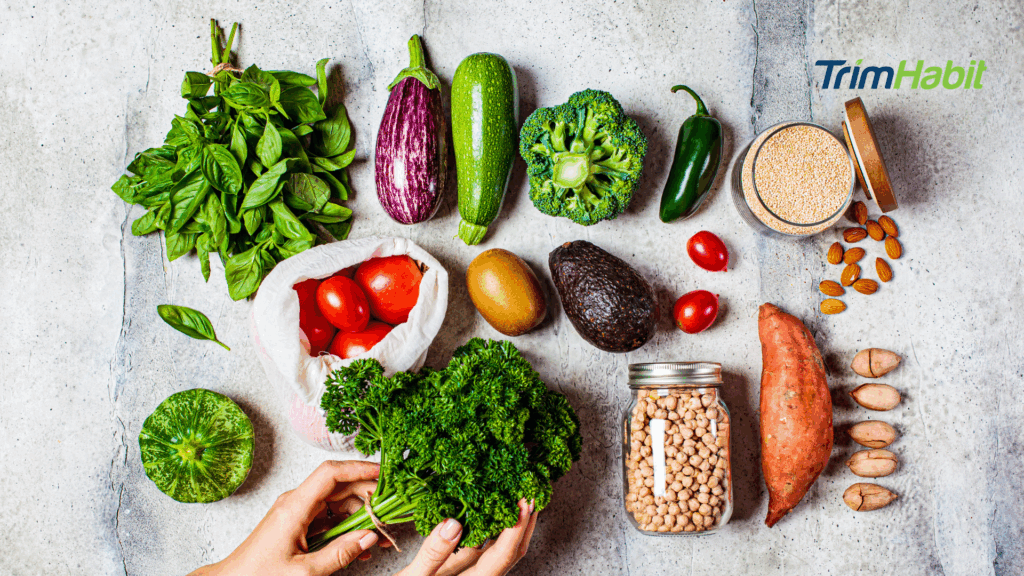As the popularity of intermittent fasting continues to rise, many individuals are exploring ways to extend their fasting periods for enhanced health benefits. While fasting can lead to weight loss, improved metabolic health, and increased longevity, adapting your meal plan to accommodate longer fasting windows is crucial for maintaining energy levels and nutritional balance.
This article will provide practical strategies on how to adjust your meal plan for longer fasting periods. We’ll explore the importance of nutrient-dense foods, hydration, and mindful eating practices to support your body during extended fasting periods.
Understanding Fasting Periods
Fasting has become a widely discussed topic for its potential to enhance health, improve metabolic function, and promote healthy weight loss. The practice of alternating eating periods with fasting can unlock several physiological benefits. To get the most out of it, it’s important to understand how different fasting methods affect the body, especially during extended periods without food. This section will delve into various fasting methods and their effects, helping you determine what aligns best with your health priorities.
Different Fasting Methods
One of the standout benefits of fasting is its flexibility, with various schedules to suit different lifestyles and preferences. Some of the common fasting schedules include:
- 16/8 Method: This involves fasting for 16 hours and eating during an 8-hour window. For example, one might skip breakfast and eat from noon to 8 pm. This method is praised for its simplicity and potential benefits in weight management and insulin resistance1,2.
- 5:2 Diet: In this method, individuals usually eat five days a week while significantly reducing calorie intake (500-600 calories) on two non-consecutive days. This approach offers flexibility but requires careful planning on fasting days1.
- Alternate-Day Fasting: This involves alternating between days of normal eating and days with very low-calorie intake (around 500 calories). This method can lead to significant calorie reduction but may be challenging to maintain due to its demanding nature1.
- 18:6 Method: Similar to the 16/8 method, this involves an eating window of 6 hours and a fasting period of 18 hours, often from noon to 6 pm. It’s considered easier for some people as it allows for two main meals without breakfast3.
How Longer Fasting Periods Affect The Body
More extended fasting periods can lead to various physiological changes:
Metabolic Changes: Extended fasting can stabilize blood glucose levels and enhance insulin resistance and sensitivity, which is crucial for managing metabolic health4.
Hormonal Adjustments: Fasting triggers hormonal changes, including increased production of glucocorticoids like cortisol, which can impact stress responses and metabolic processes5.
Psychological Effects: While some studies suggest that fasting can lead to negative emotions such as anxiety or irritability, others indicate that the psychological effects can vary based on individual responses and the duration of fasting5.
How To Adjust Your Meal Plan For Longer Fasting Periods
Intermittent fasting encourages individuals to experiment with longer fasting periods to enhance health benefits. To support these periods, it’s essential to adjust your meal plan to meet your nutritional needs.
This section provides strategies for modifying your diet, including tips on meal composition, hydration, and managing hunger. These adjustments can help maintain energy levels and amplify the benefits of fasting.
Preparing For Long Term
Embarking on a long-term fasting journey requires careful preparation to ensure your body can handle the extended period without food. Proper planning enhances the fasting experience and minimizes potential side effects. Here are essential steps to prepare effectively:
Choosing the Right Fasting Schedule
Selecting a suitable fasting schedule is essential for success. Important factors to consider include:
- Discuss Various Schedules: Options like 18:6 or even longer fasts (24 hours) should be considered based on personal lifestyle and comfort. For example, those with busy evening schedules may prefer a wider eating window, like 16:82,3.
- Importance of Consistency: Maintaining a consistent fasting schedule helps the body adapt and can enhance the effectiveness of the fasting regimen. Regularity in eating windows aids in establishing a routine that aligns with personal habits1,3.
Assessing Personal Goals and Lifestyle
Understanding your personal motivations for fasting is another key factor in choosing the right method:
- Evaluating Goals: Whether aiming for weight loss, improved health markers, or spiritual benefits, it’s essential to clarify these goals before starting a fasting regimen1,4.
- Aligning with Lifestyle: The chosen method should fit seamlessly into daily routines. For instance, if social engagements often involve meals, a more flexible approach like the 16/8 or 5:2 might be more sustainable than strict alternate-day fasting2,3.
Individuals can make effective adjustments to their meal plans when they understand different fasting methods and how they affect the body. Selecting the right fasting schedule, aligning it with personal goals, and planning meals for longer fasting periods all play a role in making the process smoother and more successful.
Adjusting Your Meal Plan
Another key aspect of managing longer fasting periods is adjusting your meal plan. This ensures your body gets the nutrients it needs while minimizing hunger and cravings. Focusing on nutrient-dense foods and using effective meal composition strategies can make the fasting process easier and help maintain steady energy levels.
Nutritional Considerations
When adjusting your meal plan for extended fasting periods, focusing on nutrient-dense foods is essential to meet your nutritional needs during eating windows. Here are key points to consider:
- Focus on Nutrient-Dense Foods: Prioritize foods rich in vitamins, minerals, and antioxidants. Fresh fruits, vegetables, legumes, and whole grains are excellent choices. These foods help regulate blood sugar levels, manage hunger effectively during fasting, and aid in fat loss6.
- Emphasis on High-Fiber and High-Protein Foods: Adapt your eating pattern by incorporating high-fiber foods (like vegetables and whole grains) and high-protein sources (such as lean meats, fish, legumes, and dairy) can help keep you satiated longer and reduce the likelihood of overeating when breaking your fast6,7.
Meal Composition Strategies
Creating balanced meals is crucial for sustaining energy levels and supporting health during fasting:
Suggestions for Balanced Meals:
- Lean Proteins: Include sources like chicken, fish, tofu, or legumes. These help maintain muscle mass and keep you full.
- Whole Grains: Opt for quinoa, brown rice, or whole grain pasta to provide sustained energy.
- Healthy Fats: Incorporate avocados, olive oil, nuts, and seeds for satiety and essential fatty acids.
- Fresh Fruits and Vegetables: Aim for a colorful variety to ensure a wide range of nutrients. They are also high in water content, which aids hydration6,8.
Hydration Tips
Staying hydrated is vital during fasting periods. Adequate hydration supports metabolic processes and helps manage hunger, while dehydration can lead to fatigue and headaches.
Recommended Beverages:
- Water (still or sparkling) is the best choice.
- Herbal teas (unsweetened) can provide flavor without calories.
- Black coffee may also be consumed but should be free from added sugars or creamers9,10.
Sample Meal Plans For Longer Fasting Periods
Creating a structured meal plan can simplify the process of adjusting to longer fasting periods:
Example Meal Plan for a 24-Hour Fast
- Pre-Fast Meal Ideas
- A balanced meal with lean protein (grilled chicken), whole grains (quinoa), healthy fats (avocado), and plenty of vegetables.
- Smoothies made with spinach, avocado, coconut milk, and chia seeds can be a gentle way to ease into eating after fasting7.
- Post-Fast Meal Suggestions:
- Start with light foods that are easy to digest, such as soup or a salad with lean protein.
- Follow up with a more substantial meal that includes complex carbohydrates (like brown rice), protein (like fish or chicken), and lots of vegetables.
Three-Day Meal Plan Template
Day 1
- Breakfast: Scrambled eggs with spinach
- Lunch: Grilled chicken salad with mixed greens
- Dinner: Baked salmon with quinoa
- Snacks: Greek yogurt with berries
Day 2
- Breakfast: Vegetable omelet
- Lunch: Lentil soup with whole grain bread
- Dinner: Stir-fried tofu with mixed vegetables
- Snacks: Cottage cheese with pineapple
Day 3
- Breakfast: Oatmeal topped with fresh fruit
- Lunch: Turkey wrap with whole grain tortilla
- Dinner: Shrimp skewers with roasted vegetables
- Snacks: Handful of almonds
This structured approach ensures you consume balanced meals while supporting your fasting goals.
Managing Hunger And Cravings
Managing hunger and cravings is essential for those navigating longer fasting periods. It’s important to listen to your body and recognize the difference between true hunger and emotional cravings. This awareness allows you to make healthier choices and stay on track with your fasting goals. Here are several strategies to help you manage hunger and cravings:
Techniques to Cope with Hunger During Fasting
Managing hunger and cravings during fasting can be challenging, but several effective techniques can help:
- Mindfulness Practices: Mindfulness can enhance awareness of hunger cues and emotional responses to fasting. Meditation, deep breathing, or simply observing your thoughts can help you manage cravings without succumbing to them. Mindful eating practices can also be beneficial when breaking your fast, allowing you to appreciate food more thoroughly and recognize when satisfied11.
- Staying Busy and Distracted: Keeping your mind occupied can help reduce the focus on hunger. Engaging in activities such as reading, exercising, or pursuing hobbies can distract from cravings. Creative tasks like painting or writing can also release feel-good hormones similar to eating, helping mitigate the desire to eat healthy food12.
Tips for Breaking a Fast Without Overeating
When it’s time to break your fast, it’s crucial to do so thoughtfully:
- Gradual Reintroduction of Food: Start with small portions to allow your digestive system to adjust. This gradual approach helps prevent discomfort and reduces the risk of overwhelming your body after fasting13.
- Start with Lighter Meals Before Heavier Options: Begin with easily digestible foods such as bone broth, smoothies, or salads. These options provide hydration and essential nutrients without causing a spike in blood sugar levels. After a few hours, you can transition to more substantial meals that include proteins and complex carbohydrates14.
Potential Challenges And Solutions
Even with all the proper planning, challenges may still arise. The good news is that there are solutions to help you overcome them.
Common Issues Faced During Longer Fasting Periods
More extended fasting periods can lead to various challenges:
- Fatigue: Many individuals experience fatigue due to reduced caloric intake and changes in energy metabolism.
- Irritability: Mood swings can occur as blood sugar levels fluctuate during fasting.
Strategies to Overcome These Challenges
Implementing specific strategies can help manage these issues effectively:
- Adjusting Meal Timing: If fatigue is an issue, consider adjusting your eating window or meal timing to better align with your energy needs throughout the day. Eating larger meals earlier in the day may provide more sustained energy.
- Incorporating More Fiber and Protein: Increasing the intake of fiber-rich foods (like vegetables and whole grains) and protein sources (like lean meats and legumes) can enhance satiety, helping you feel fuller longer and reducing irritability associated with hunger15.
A well-adjusted meal plan is vital for successfully navigating longer fasting periods. Individuals can manage hunger effectively by employing mindfulness techniques, staying engaged in activities, and carefully planning how to break a fast. Experimenting with different strategies is essential to find what works best for you. Fasting shouldn’t be rigid; it should be flexible and tailored to fit personal lifestyles and preferences to achieve the best health benefits.









